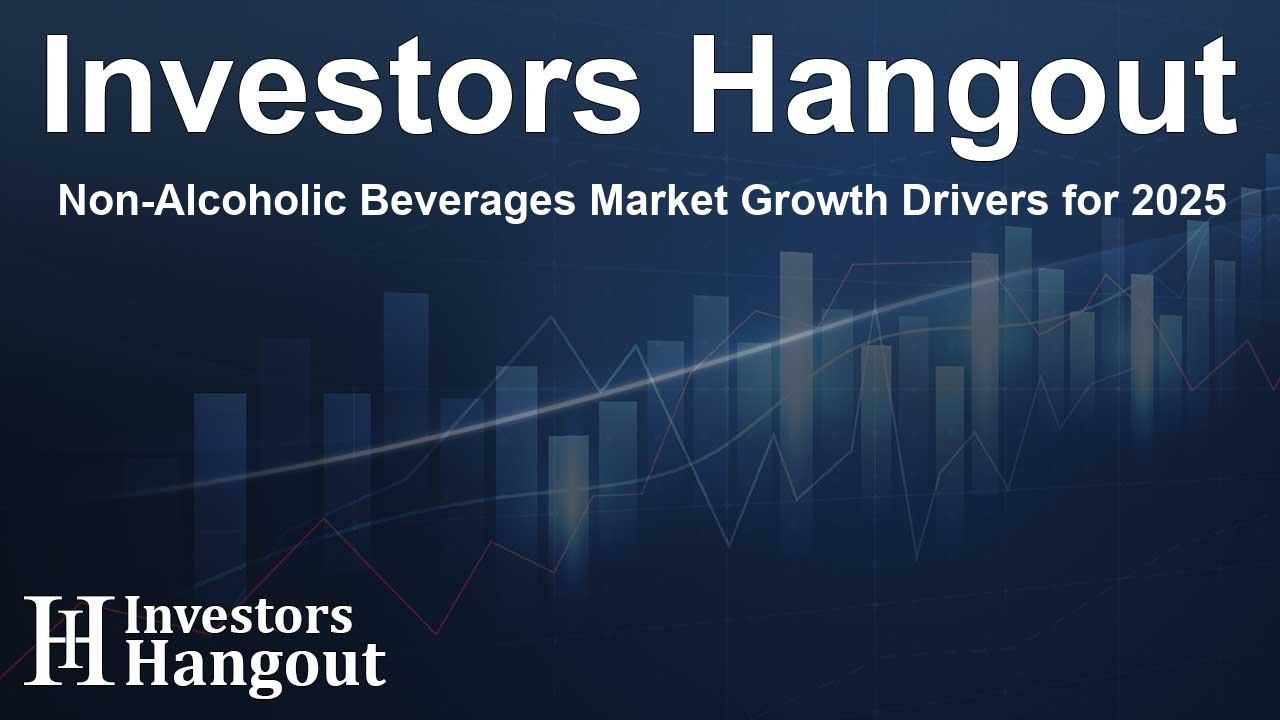Non-Alcoholic Beverages Market Growth Drivers for 2025

Understanding the Non-Alcoholic Beverages Market Potential
The global non-alcoholic beverages market is witnessing significant growth, expected to climb from USD 1,308 billion in 2024 to an impressive USD 2,696 billion by 2034. This trend reflects a compound annual growth rate (CAGR) of 7.50% from 2025 to 2034, highlighting the increasing consumer shift towards healthier beverage choices. This change is primarily driven by heightened awareness regarding health and well-being, leading people to seek options that are free from alcohol and sugar.
Shifting Consumer Preferences and Market Trends
As health consciousness continues to rise, consumers are pivoting towards non-alcoholic beverages that promote a healthier lifestyle without sacrificing flavor. Beverages such as flavored water, mocktails, and various juices are gaining traction due to their perceived health benefits. This growing awareness regarding health has made many individuals prefer non-alcoholic drinks, which serve as ideal alternatives for maintaining lower sugar intake while enjoying a satisfying taste. Furthermore, the variety of options available now allows consumers to enjoy their favorite flavors safely.
Key Drivers of Market Growth
The rapid growth of the non-alcoholic beverages market can be attributed to several key factors. First, an increasing demand for sugar-free beverages aligns with the overall trend of healthier eating habits. This demand encourages beverage companies to innovate, leading to a wider selection of sugar-free options across retail channels. Additionally, the rise of health-conscious consumers is pushing brands to reconsider their offerings and create more products that cater to these preferences.
Technological Innovations Transforming the Market
Technological advancements within the brewing and beverage industry are also playing a vital role in the growth of non-alcoholic beverages. With innovations such as smart vending kiosks, consumers can access personalized and healthier drink options conveniently. The emergence of subscription platforms further enhances this experience, allowing consumers to receive these healthier drinks right at their doorsteps. Companies are also experimenting with new flavors, contributing to the excitement and growth of the non-alcoholic beverage segment.
Regional Insights: Asia Pacific and North America
In terms of market presence, the Asia Pacific region held a substantial share of approximately 34% in 2024, largely driven by rising disposable incomes and an improving standard of living. Consumers in this region exhibit a growing preference for convenience and health-focused options, paving the way for the expansion of non-alcoholic beverages.
North America is not far behind, emerging as the fastest-growing region due to heightened consumer demand for various non-alcoholic beverages. The focus on functional and sugar-free drinks, coupled with the evolving tastes of individuals, continues to stimulate market growth significantly in this area.
Emerging Challenges Ahead
While the market is positioned for growth, it faces challenges as well. Various taxation forms, such as sin taxes and GST, can lead to increased prices for consumers. Moreover, logistical hurdles and competition between established brands can impact market accessibility and pricing, deterring price-sensitive consumers.
Looking Towards the Future of Non-Alcoholic Beverages
The future of non-alcoholic beverages appears bright, forecasted to expand further within a dynamic consumer landscape. The steady demand for innovative, sugar-free, and functional drinks signals a shift in consumption trends. Brands must continue to adapt to consumer preferences, ensuring that they meet health standards while providing enjoyable experiences. Strategies focused on health, convenience, and flavor will undoubtedly shape the landscape of the non-alcoholic beverages market in the coming years.
Frequently Asked Questions
1. What is the projected market size for non-alcoholic beverages by 2034?
The non-alcoholic beverages market is expected to reach USD 2,696 billion by 2034.
2. What factors are driving the growth of the non-alcoholic beverages market?
Key growth drivers include increasing health consciousness, demand for sugar-free beverages, and technological innovations in distribution.
3. Which regions are leading in the non-alcoholic beverages market?
Asia Pacific holds the largest market share, while North America is recognized as the fastest-growing region.
4. What challenges does the non-alcoholic beverages market face?
Challenges include taxation on beverages, pricing issues, and logistical complications impacting market reach.
5. How is consumer preference changing regarding beverages?
Consumers are increasingly favoring non-alcoholic and healthier options, resulting in a notable shift away from traditional alcoholic drinks.
About The Author
Contact Addison Perry privately here. Or send an email with ATTN: Addison Perry as the subject to contact@investorshangout.com.
About Investors Hangout
Investors Hangout is a leading online stock forum for financial discussion and learning, offering a wide range of free tools and resources. It draws in traders of all levels, who exchange market knowledge, investigate trading tactics, and keep an eye on industry developments in real time. Featuring financial articles, stock message boards, quotes, charts, company profiles, and live news updates. Through cooperative learning and a wealth of informational resources, it helps users from novices creating their first portfolios to experts honing their techniques. Join Investors Hangout today: https://investorshangout.com/
The content of this article is based on factual, publicly available information and does not represent legal, financial, or investment advice. Investors Hangout does not offer financial advice, and the author is not a licensed financial advisor. Consult a qualified advisor before making any financial or investment decisions based on this article. This article should not be considered advice to purchase, sell, or hold any securities or other investments. If any of the material provided here is inaccurate, please contact us for corrections.
